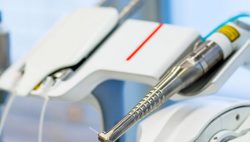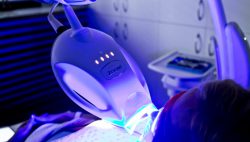Wisdom tooth removal
Wisdom tooth extraction is a surgical procedure to remove one or more wisdom teeth — the four permanent adult teeth located at the back corners of your mouth on the top and bottom.
If a wisdom tooth doesn’t have room to grow (impacted wisdom tooth), resulting in pain, infection or other dental problems, you’ll likely need to have it pulled. Wisdom tooth extraction may be done by a dentist or an oral surgeon. Some dentists and oral surgeons recommend wisdom tooth extraction even if impacted teeth aren’t causing problems, as a preventive measure against potential future problems.

Wisdom teeth are the last of your teeth to come in, or erupt, through the gums. Sometimes a wisdom tooth becomes impacted, or stuck below the surface of your gums, and grows at an odd angle, possibly causing complications.
Wisdom teeth, or third molars, are the last permanent teeth to appear (erupt) in the mouth. These teeth usually appear between the ages of 17 and 25. Some people never develop wisdom teeth. For others, wisdom teeth erupt normally — just as their other molars did — and cause no problems.
Many people, however, develop impacted wisdom teeth — teeth that don’t have enough room to erupt into the mouth or grow normally. Impacted wisdom teeth may erupt only partially or not at all.

An impacted wisdom tooth may:
*Grow at an angle toward the next tooth (second molar)
*Grow at an angle toward the back of the mouth
*Grow at a right angle to the other teeth, as if the wisdom tooth is “lying down” within the jawbone
*Grow straight up or down like other teeth but stay trapped within the jawbone
You’ll likely need your impacted wisdom tooth pulled if it results in problems such as pain, infection, damage to an adjacent tooth, development of a fluid-filled sac (cyst) around the wisdom tooth, damage to surrounding bone, complications with orthodontic treatments to straighten other teeth

Preventing future dental problems
Dental specialists disagree about the value of extracting impacted wisdom teeth that aren’t causing problems (asymptomatic).
Here’s the rationale for preventive treatment:
*It’s difficult to predict future problems with impacted wisdom teeth.
*Symptom-free wisdom teeth could still harbor disease.
*Having your wisdom teeth makes you vulnerable to gum disease and tooth cavities.
*Removing impacted teeth lowers the risk of potential problems.
*Serious complications rarely happen in younger adults.
*Older adults may experience difficulty with surgery and complications after surgery.
*Other specialists argue that there isn’t enough evidence to suggest that impacted wisdom teeth not causing problems in young adults will later cause problems. Therefore, they suggest that the expense and risks of the procedure don’t justify the expected benefit.
- Published in Dental Care, Tin tức
VĨNH BIỆT HÀM RĂNG XỈN MÀU VỚI CÔNG NGHỆ MẶT DÁN SỨ VENEER
Răng nhiễm màu, nhiễm kháng sinh, flour, ố vàng, sứt, gãy, vỡ, mẻ cạnh gây ra những khó khăn trong ăn nhai, sinh hoạt đặc biệt là tính thẩm mỹ của nụ cười. Với công nghệ nha khoa hiện đại, mặt dán sứ veneer ra đời khắc phục rất nhiều nhược điểm, khiếm khuyết trên răng đem đến cho bạn sự tự tin trong cuộc sống.
Mặt dán sứ veneer là gì?
Mặt dán sứ veneer là phương pháp thẩm mỹ răng sử dụng một lớp sứ rất mỏng từ 0.3 – 0.6mm phủ lên bề mặt răng cần phục hình. Răng sau khi thực hiện mặt dán sứ veneer có màu sắc trắng sáng, hình dáng răng đẹp và chức năng ăn nhai, thẩm mỹ tối ưu.
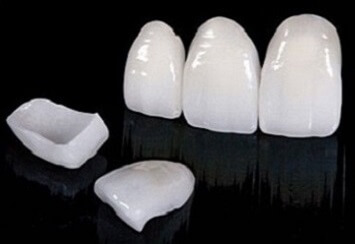
Mặt dán sứ veneer siêu mỏng
Với phương pháp CAD/CAM hiện đại nhất hiện nay, phôi sứ cao cấp Emax được nhập khẩu 100% từ Đức được chế tác hoàn toàn tự động dựa trên thiết kế kiểu dáng răng thông minh điều khiển từ máy tính. Các đường nét và cấu trúc mặt dán sứ chính xác, chuẩn tỷ lệ cho phục hình khít sát với răng cần dán.
Các ưu điểm của phương pháp mặt dán sứ veneer:
- Mài một lớp rất mỏng trên bề mặt răng (0.3 – 0.6 mm) không gây đau hay ê buốt
- Không tác động đến cấu trúc răng, bảo tồn răng thật tối đa, không ảnh hưởng đến tủy răng
- Tính thẩm mỹ vượt trội với màu sắc răng trắng bóng, hình dáng răng chuẩn đẹp, hiệu quả cao như bọc răng sứ
- Không ảnh hưởng đến ăn nhai, răng sau khi dán sứ veneer có vai trò như răng tự nhiên
Tuy nhiên, không phải trường hợp nào cũng có thể thực hiện mặt dán sứ Veneer. Phương pháp này khá kén chọn và chỉ phù hợp với các trường hợp:
- Khớp cắn chuẩn, răng đều, không khấp khểnh và lệch lạc
- Răng thưa nhẹ với khoảng thưa nhỏ từ 0.1 – 0.3 mm
- Răng nhiễm màu nhẹ, nhiễm kháng sinh, flour nhẹ (độ I, II)
- Răng sứt, mẻ, vỡ cạnh có diện tích vỡ nhỏ.
- Published in Nha Khoa Thẩm Mỹ
LIGHTWALKER LASER
Bone graft for dental implants
For those who are missing one or more teeth, the cosmetic effect of a dental implant is almost unbeatable. Dental implants look and function the same as a regular tooth, and a successful implant is just about undetectable. It is always important, however, to make sure that you understand all the various aspects of an oral surgery, and dental implants are no different. One of the main things to be aware of is the possibility of needing a bone graft for dental implants.

Bone grafting
A dental implant basically has two pieces: a metal cylinder that is placed into the jaw bone and functions like the root of the tooth, and an abutment that screws into the first piece. A crown is then placed on the abutment, creating the appearance of a tooth.
The oral surgeon may talk to you about undergoing a bone graft for dental implants if he believes that your jaw bone is too thin or soft to keep the implant in place in its current state. If the bone cannot support the implant, it may cause the implant surgery to fail.
In a bone graft procedure, the surgeon will take a section of bone from another area of your body, or – as is most often the case now – use a special bone grafting material, and graft it onto your jaw bone. You will then have to wait, most likely several months, while the graft creates enough new, strong bone to make sure that the implant will be stable and secure. It is possible if you only need a minor graft that the procedure might be able to be done at the same time as the implant surgery, but your dental specialist will make the final decision. A successful bone graft allows your jaw bone to be strong enough to support your dental implant.

Once the bone graft is complete, the rest of the implant surgery can proceed. As with any surgical procedure, it is important to discuss your personal medical history and all the risks and benefits of the surgery with your dental specialist. Once your doctor decides you are a good fit for the procedure, you can look forward to a brand new smile.

- Published in Dental Implant, Tin tức
Zoom whitening
The Zoom Teeth Whitening System is one of the most popular teeth whitening systems available on the market today. In fact, it is the most widely used light activated the system by dentists worldwide. The product comes in an all-inclusive pack. This means that the dentist is provided with all the necessary materials required for professional tooth bleaching in a single ready to use kit. The product includes the tooth whitener, the bleaching light and a number of disposable and single-use items to be used on the patient while performing Zoom! Whitening treatments.
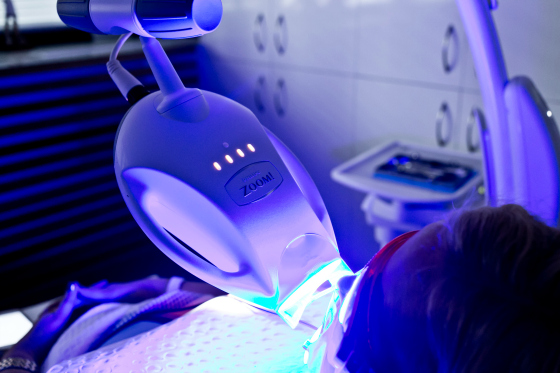
As a part of the procedure, the Zoom! Teeth Whitening System requires the use of a mercury metal halide light for bleaching. According to Discus Dental Inc, the wavelength of the light emitted from its units is in the range of 350-400 nm. The light is violet in color. The manufacturer claims that the mercury metal halide light with this wavelength activates the Zoom Whitening System, speeding up the bleaching process and enhances its performance.
The light unit in the Zoom! System comes with a built-in infrared filter. The filter helps in minimizing the amount of heat generated at the surface of the teeth from the light during the bleaching process by filtering the emissions. The Zoom! Teeth Whitening System is capable of whitening both the top and bottom teeth simultaneously with a strategically placed light.
Discus Dental developed a newer bleaching lamp in 2007, called the Zoom Advanced Power Lamp. It’s advertised to dentists as a more powerful tool – whitening teeth by as much as 2 shades more than the previous Zoom lamp product. Clinical studies conducted by The Dental Advisor in November of 07 seem to confirm this lamp’s claims – with results showing whitening improvement in the 1.9 range over the previous protocol.
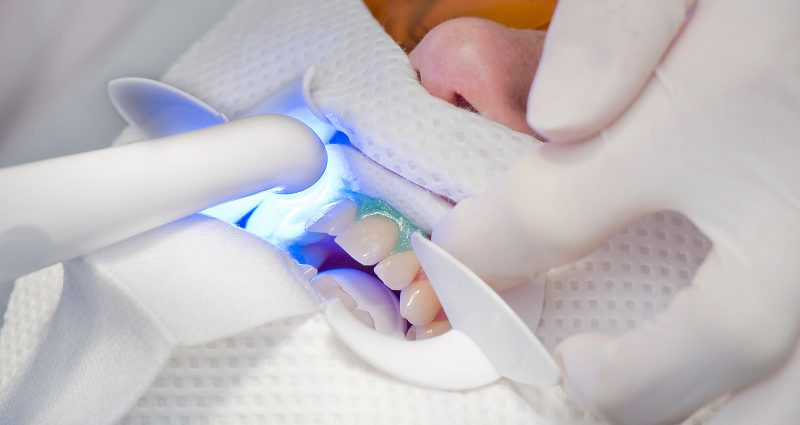
The existing Zoom protocol and lamp have been used on the market for a long time. While the majority of patients report no heating effect during the bleaching treatment, some patients have experienced lip burns or tooth dehydration as illustrated in the user comments below. The new Advanced Power Light, however, has been shown to cause less sensitivity in sensitivity-prone or almost-sensitivity prone patients.

The Zoom! Teeth Whitening System has several steps. First, the doctor evaluates the patient’s pre-whitening tooth shade. The dentist then isolates the teeth that need to be whitened with the use of a dental dam. The patient is protected with a bib. The dentist then applies the hydrogen peroxide whitening gel on the surface of the teeth. After the application of the whitening gel, the activating light is used on the teeth for activating the whitening gel. The tooth whitener is then left for about 20 minutes. The procedure is repeated two more times, with each application lasting for 20 minutes. After the procedure is over, the teeth are washed thoroughly and the whitener is removed completely from the surface. The dentist then applies 1.1% neutral sodium fluoride gel on the teeth surface to reduce or prevent any sensitivity to hot and cold items. Finally, the patient is provided with an at-home tooth whitening system along with instructions for following up.
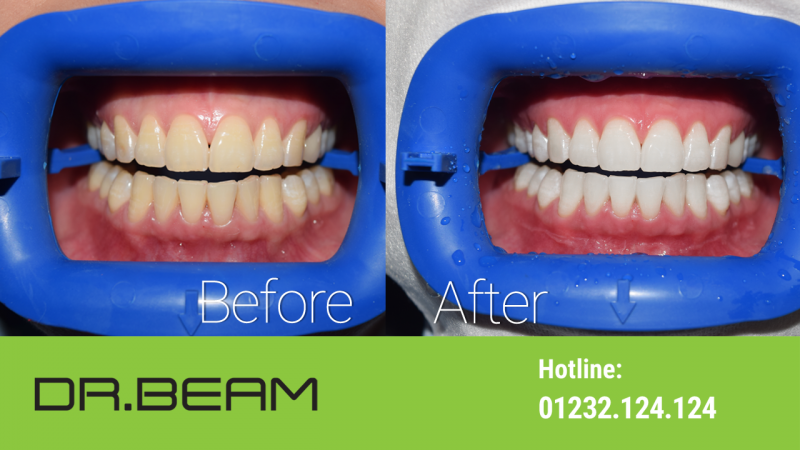
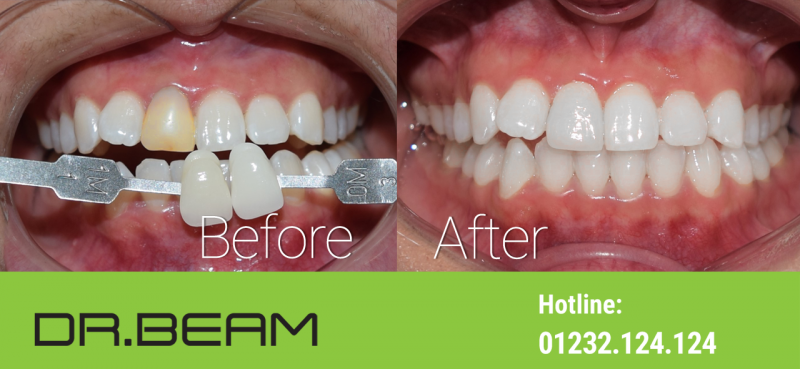

- Published in Cosmetic Dentistry, Tin tức
Orthodontics price
Niềng răng (chỉnh nha) là một trong những phương pháp thẩm mỹ răng an toàn, đẹp và hiệu quả bền vững được nhiều người quan tâm. Ngoài các thông tin về kỹ thuật chỉnh nha, bác sĩ, mọi người cũng khá băn khoăn về yếu tố niềng răng có chi phí bao nhiêu tiền? Với công nghệ niểng răng 3M hiện đại tại Nha khoa DR.BEAM, bạn hoàn toàn yên tâm khi gửi gắm nụ cười của mình.
Những yếu tố ảnh hưởng đến chi phí niềng răng tại Nha khoa DR.BEAM
Chi phí niềng răng ở mỗi người sẽ khác nhau phụ thuộc vào rất nhiều yếu tố như: loại mắc cài bạn lựa chọn; cần sử dụng thêm bao nhiêu khí cụ chỉnh nha hỗ trợ (band, cắm vis…); các phương pháp thẩm mỹ bổ trợ (đánh lún răng, cắt lợi,..); các phát sinh không mong muốn từ phía khách hàng (bung tuột mắc cài,..) mà tổng chi phí niềng răng sẽ khác nhau.
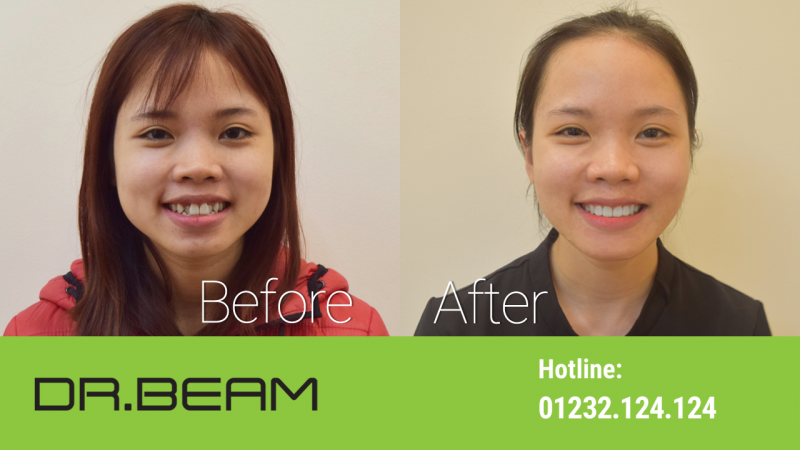
Tuy nhiên tại DR.BEAM, sau khi nghiên cứu các bác sĩ sẽ lập kế hoạch điều trị ngay từ đầu và sẽ không có bất kỳ phát sinh nào trong suốt quá trình điều trị.
Chi phí niềng răng tại Nha khoa DR.BEAM
| STT | PHƯƠNG PHÁP NIỀNG RĂNG | CHI PHÍ (VNĐ) |
| 1 | Mắc cài kim loại tiêu chuẩn | 30.000.000 |
| 2 | Mắc cài kim loại tự đóng | 45.000.000 |
| 3 | Mắc cài sứ tiêu chuẩn | 45.000.000 |
| 4 | Mắc cài sứ tự đóng | 55.000.000 |
| 5 | Mắc cài mặt lưỡi | 75.000.000 |
| 6 | Niềng răng mắc cài cá nhân hóa | 85.000.000 |
| 7 | Niềng răng trong suốt Invisalign độ I | 80.000.000 |
| 8 | Niềng răng trong suốt Invisalign độ II | 100.000.000 |
| 9 | Niềng răng trong suốt Invisalign độ III | 120.000.000 |
Khi bạn đến thăm khám và đồng ý thực hiện chỉnh nha tại DR.BEAM, không phải tất cả các chi phí đều tính mà sẽ được miễn phí như:
+ Khám tư vấn và lập kế hoạch điều trị chi tiết
+ Chụp phim X-quang 2D, 3D
+ Nhổ răng phục vụ quá trình điều trị niềng răng
+ Lấy cao răng và đánh bóng
+ Tặng bộ chăm sóc răng miệng (bộ bàn chải kẽ của Nhật, Sáp)
+ Trám răng sâu (từ 1-2)
Sau khi lập kế hoạch điều trị, trên đó sẽ có các hướng dẫn chi tiết về các phương hướng điều trị cũng như tổng chi phí mà bạn phải đóng. Ngoài ra, sẽ không có bất kỳ chi phí phát sinh nào trong suốt quá trình điều trị ngoài kế hoạch điều trị ban đầu.
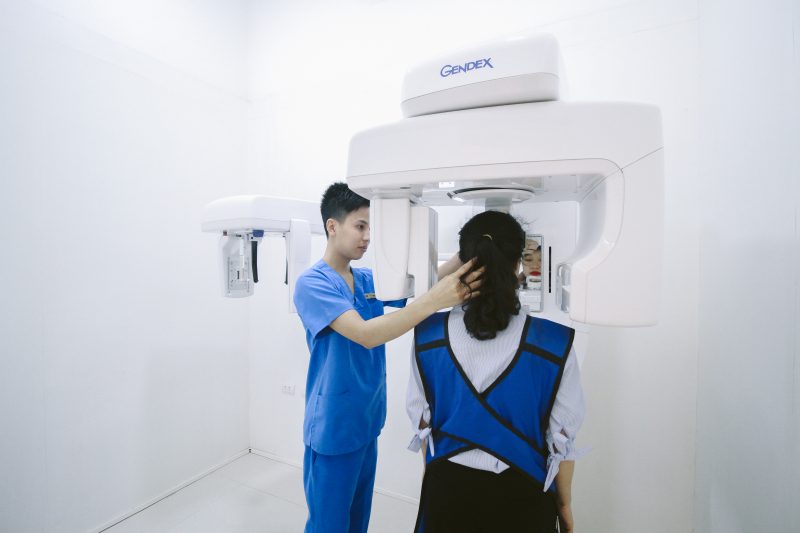
Chụp ảnh X-quang bằng công nghệ Cone Beam 3D tại Nha khoa DR.BEAM
Nếu bạn còn băn khoăn không biết chi phí chỉnh nha kia có phù hợp hay không, hãy liên hệ ngay với chúng tôi qua tổng đài: 1800.1055 để được tư vấn chi tiết hoặc đăng ký khám trực tiếp bởi các bác sĩ chuyên khoa. Nha khoa DR.BEAM xứng đáng là nơi tin cậy để bạn gửi gắm nụ cười của mình.
Chi tiết liên hệ:
Facebook: https://www.facebook.com/drbeamdental/
Nha khoa Thẩm mỹ DR.BEAM:
![]() ?124 Xã Đàn – Đống Đa – Hà Nội
?124 Xã Đàn – Đống Đa – Hà Nội
![]() ? Tel: 024 3572 7722 | Hotline: 0832 124 124
? Tel: 024 3572 7722 | Hotline: 0832 124 124
Root planing and scaling teeth
If your dental hygienist cleans your teeth every six months or so, you know that a routine professional cleaning involves scaling teeth and the gumline to remove plaque and tartar, and polishing to remove stains and smooth the tooth’s surface. This is done to keep your teeth and gums healthy. If you have symptoms of gum disease, however, you may need another type of cleaning, called scaling and root planing.
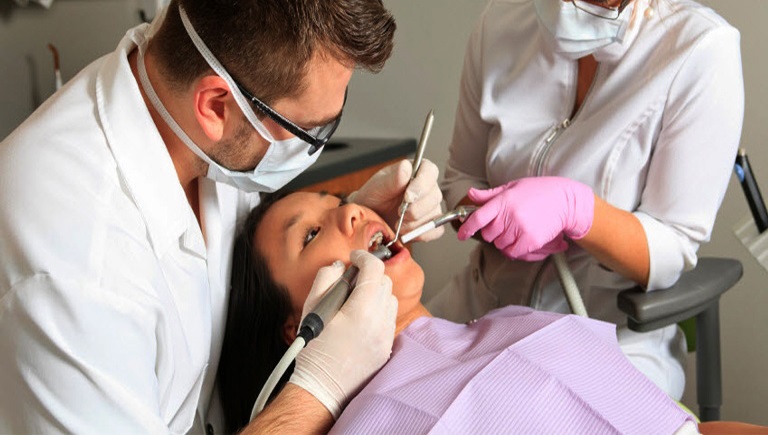
Although routine cleanings are done to prevent periodontal (gum) disease, scaling and root planing is a non-surgical procedure done to treat periodontal disease. In fact, this procedure – sometimes called a deep cleaning – is considered the “gold standard” of treatment for patients with chronic periodontitis.
Healthy gum tissue fits tightly around each tooth. But, when bacterial plaque and tartar accumulate around and under the gums, tissues that support your teeth may be affected and periodontal disease can develop causing deeper pockets to form.
When you have more advanced signs of gum disease (bad breath, heavy tartar buildup and unhealthy pocket depths of 4mm or more), your dentist may recommend scaling and root planning as the first procedure necessary to treat the condition.
Scaling and root planning teeth, provided by either your dentist or dental hygienist, may take more than one appointment to complete, and a local anesthetic is often used to minimize any discomfort.
The procedure involves thoroughly scaling all plaque, bacterial toxins and tartar deposits from your teeth and root surfaces; and then root planning, which smoothes all rough areas on your roots’ surfaces. Smooth root surfaces keep bacteria, plaque, and tartar from re-adhering underneath the gumline, allowing your gums to heal and reattach themselves more firmly.
- Published in General Dentistry
Bruxism (teeth grinding)
To evaluate the extent of bruxism, you need to check for:
– Tenderness in your jaw muscles
– Obvious dental abnormalities, such as broken or missing teeth
– Other damage to your teeth, the underlying bone and the inside of your cheeks, usually with the help of X-rays
A dental exam may detect other disorders that can cause similar jaw or ear pain, other dental problems or health conditions.
If you or your child has bruxism, the treatment might be to preserve or improve the teeth. Although these methods may prevent or correct the wear to your teeth, they may not stop the bruxism:
Splints and mouth guards. These are designed to keep teeth separated to avoid the damage caused by clenching and grinding. They can be constructed of hard acrylic or soft materials and fit over your upper or lower teeth.
Dental correction. In severe cases — when tooth wear has led to sensitivity or the inability to chew properly — your dentist may need to reshape the chewing surfaces of your teeth or use crowns to repair the damage.
Muscle relaxants. In some cases, your doctor may suggest taking a muscle relaxant before bedtime, for a short period of time.
Botox injections. Injections of Botox, a form of botulinum toxin, may help some people with severe bruxism who don’t respond to other treatments.
Medication for anxiety or stress. Your doctor may recommend short-term use of antidepressants or anti-anxiety medications to help you deal with stress or other emotional issues that may be causing your bruxism.
- Published in General Dentistry
CHI PHÍ NIỀNG RĂNG THẨM MỸ TẠI NHA KHOA QUỐC TẾ DND
Niềng răng (chỉnh nha) là một trong những phương pháp thẩm mỹ răng an toàn, đẹp và hiệu quả bền vững được nhiều người quan tâm. Ngoài các thông tin về kỹ thuật chỉnh nha, bác sĩ, mọi người cũng khá băn khoăn về yếu tố niềng răng có chi phí bao nhiêu tiền? Với công nghệ niểng răng 3M hiện đại tại Nha khoa Quốc tế DND, bạn hoàn toàn yên tâm khi gửi gắm nụ cười của mình.
Những yếu tố ảnh hưởng đến chi phí niềng răng tại Nha khoa Quốc tế DND
Chi phí niềng răng ở mỗi người sẽ khác nhau phụ thuộc vào rất nhiều yếu tố như: loại mắc cài bạn lựa chọn; cần sử dụng thêm bao nhiêu khí cụ chỉnh nha hỗ trợ (band, cắm vis…); các phương pháp thẩm mỹ bổ trợ (đánh lún răng, cắt lợi,..); các phát sinh không mong muốn từ phía khách hàng (bung tuột mắc cài,..) mà tổng chi phí niềng răng sẽ khác nhau.
Tuy nhiên tại Nha khoa Quốc tế DND sau khi nghiên cứu các bác sĩ sẽ lập kế hoạch điều trị ngay từ đầu và sẽ không có bất kỳ phát sinh nào trong suốt quá trình điều trị.

Quy trình niềng răng tại Nha khoa Quốc tế DND
+ Khám tư vấn và lập kế hoạch điều trị chi tiếtKhi bạn đến thăm khám và đồng ý thực hiện chỉnh nha tại Nha khoa Quốc tế DND, không phải tất cả các chi phí đều tính mà sẽ được miễn phí như:
+ Chụp phim 2D, 3D
+ Nhổ răng phục vụ quá trình điều trị niềng răng
+ Lấy cao răng và đánh bóng
+ Tặng bộ chăm sóc răng miệng (bộ bàn chải kẽ của Nhật, Sáp)
+ Trám răng sâu (từ 1-2)
Sau khi lập kế hoạch điều trị, trên đó sẽ có các hướng dẫn chi tiết về các phương hướng điều trị cũng như tổng chi phí mà bạn phải đóng. Ngoài ra, sẽ không có bất kỳ chi phí phát sinh nào trong suốt quá trình điều trị ngoài kế hoạch điều trị ban đầu.
Chi phí dịch vụ niềng răng, tìm hiểu thêm tại đây

Chụp ảnh X-quang bằng công nghệ Cone Beam 3D tại Nha khoa Quốc tế DND
Nếu bạn còn băn khoăn không biết chi phí chỉnh nha kia có phù hợp hay không, hãy liên hệ ngay với chúng tôi qua Hotline: 0832.124.124 để được tư vấn chi tiết hoặc đăng ký khám trực tiếp bởi các bác sĩ chuyên khoa. Nha khoa Quốc tế DND xứng đáng là nơi tin cậy để bạn gửi gắm nụ cười của mình.
- Published in Khuyến Mãi, Tin tức



